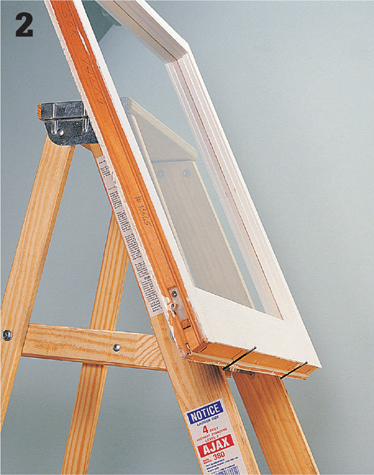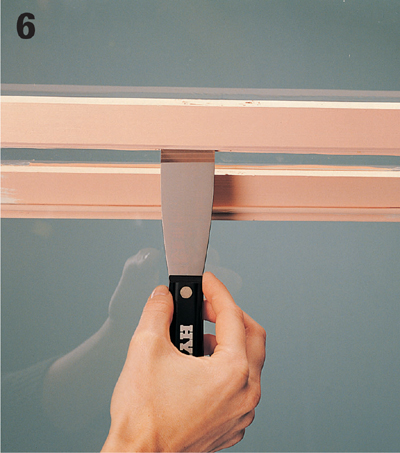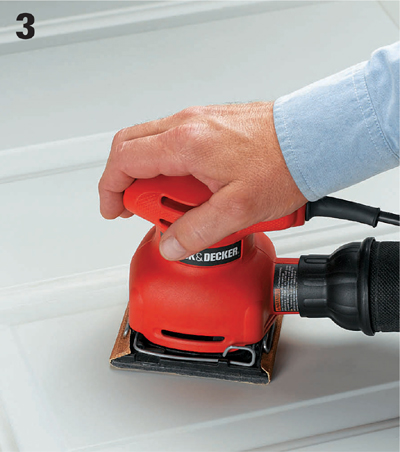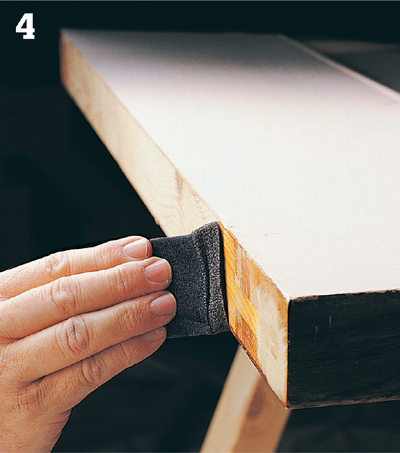 9. Trim Techniques
9. Trim Techniques 9. Trim Techniques
9. Trim TechniquesWhen painting an entire room, paint the wood trim first, then paint the walls. Start by painting the inside portions of the trim, and work out toward the walls. On windows, for instance, first paint the edges close to the glass, then paint the surrounding face trim.
Doors should be painted quickly because of the large surface. To avoid lap marks, always paint from dry surfaces back into wet paint. On baseboards, cut in the top edge and work down to the flooring. Plastic floor guards or a wide broadknife can help shield carpet and wood flooring from paint drips.
Alkyds and latex enamels may require two coats. Always sand lightly between coats and wipe with a tack cloth so that the second coat bonds properly.

 How to Paint a Window
How to Paint a Window
To paint double-hung windows, remove them from their 1frames if possible. Newer, spring-mounted windows are released by pushing against the frame (see arrow).

Drill holes and insert two 2" nails into the legs of a wooden 2step ladder. Mount the window easel-style for easy painting. Or, lay the window flat on a bench or sawhorses. Do not paint the sides or bottom of the window sashes.
Using a tapered sash brush, begin by painting the wood next to the glass. Use the narrow edge of the brush, and overlap the paint onto the glass to create a weatherseal.

Remove excess paint from the glass with a putty knife wrapped in a clean cloth. Rewrap the knife often so that you always wipe with clean fabric. Overlap paint from the sash onto the glass by 1/16".

Paint all flat portions of the sashes, then the case moldings, sill, and apron. Use slow brush strokes, and avoid getting paint between the sash and the frame.

If you must paint windows in place, move the painted windows up and down several times during the drying period to keep them from sticking. Use a putty knife to avoid touching the painted surfaces.
 How to Paint Doors
How to Paint Doors
Remove the door by driving out the lower hinge pin with a screwdriver and hammer. Have a helper hold the door in place. Then, drive out the middle and upper hinge pins.

Place the door flat on sawhorses for painting. On paneled doors, paint in the following order, using a brush rather than a roller: 1) recessed panels, 2) horizontal rails, and 3) vertical stiles.

Let the painted door dry. If a second coat of paint is needed, sand the first coat lightly and wipe the door with tack cloth before repainting.

Seal the unpainted edges of the door with a clear wood sealer to prevent moisture from entering the wood. Water can cause wood to warp and swell.